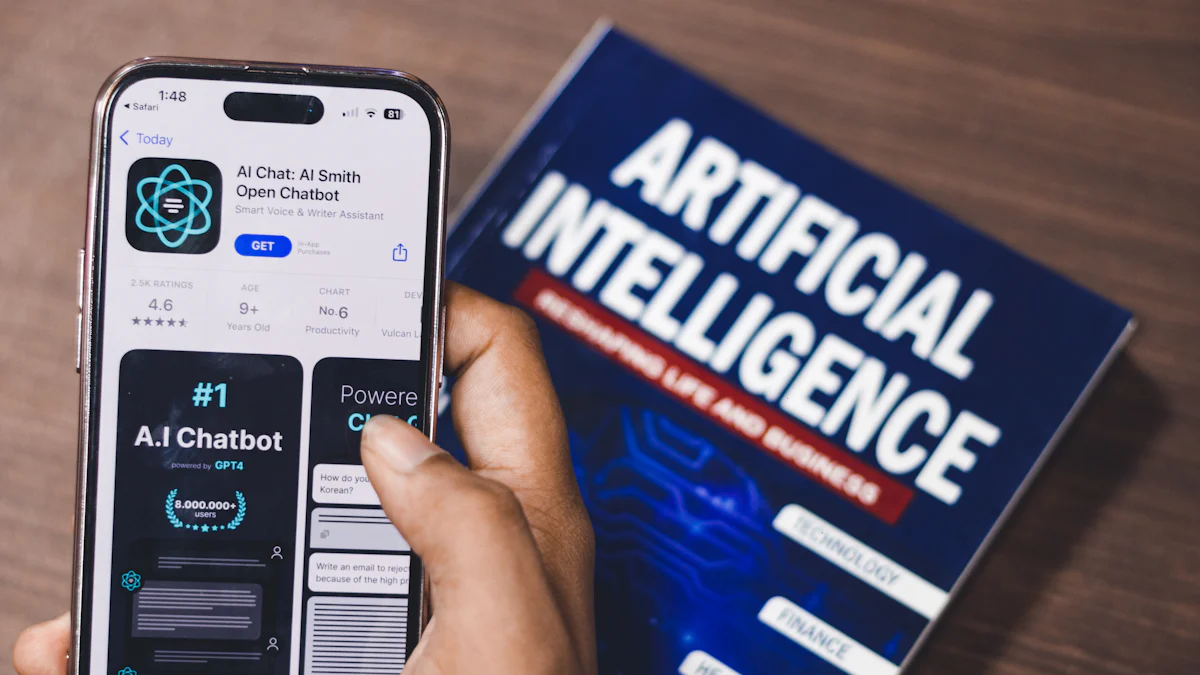Will AI Replace Customer Service? Pros and Cons Explained

Artificial intelligence is reshaping how businesses handle customer service. You’ve likely noticed chatbots answering questions or virtual assistants guiding you through processes. These tools, including Sobot AI, offer speed and convenience, especially for simple queries. In fact, 61% of customers now rely on self-service channels for straightforward issues. However, AI lacks the emotional intelligence needed to address complex or sensitive concerns.
While 81% of customers prefer self-service options, human agents remain essential for tasks requiring empathy and creativity. Companies like Sobot combine AI’s efficiency with human expertise to create balanced solutions. This hybrid approach ensures businesses meet customer needs without sacrificing quality. As AI adoption grows, particularly in North America, the question arises: will AI replace customer service entirely? The answer lies in leveraging both AI and human strengths, ensuring that tools like Sobot AI enhance rather than replace the human touch in customer interactions.
What Is AI in Customer Service?

Defining AI in Customer Service
Overview of AI technologies used in customer service
AI in customer service refers to the use of advanced technologies to streamline and improve how businesses interact with customers. These tools help automate customer interactions, reduce response times, and provide personalized support. Some key components include:
- Chatbots and virtual assistants that use conversational AI to understand and respond to customer queries.
- AI automation tools that handle routine tasks like routing inquiries and transcribing calls.
- Voice recognition tools powered by natural language processing (NLP) to interpret verbal input and detect customer sentiment.
These technologies allow businesses to enhance customer interactions by offering faster and more accurate responses. For example, Sobot’s AI-powered solutions combine these tools to provide seamless support, ensuring customers receive assistance tailored to their needs.
Examples of AI applications (e.g., chatbots, virtual assistants)
AI applications in customer service are diverse and growing. AI chatbots, for instance, engage customers in real time, answering common questions or assisting with tasks like order tracking. Virtual assistants go a step further by guiding users through complex processes, such as troubleshooting technical issues. Other applications include:
- AI automation tools that send personalized messages or route customers based on their intent.
- Voice recognition systems that resolve verbal inquiries or direct customers to the right department.
- AI analytical tools that transcribe conversations and provide actionable insights to improve service quality.
Using AI in customer service enables businesses to operate 24/7, offering self-service options that empower customers to find solutions without waiting for human agents.
Current Applications of AI
Automating repetitive tasks
AI excels at automating repetitive tasks, freeing up human agents to focus on more complex issues. For example, AI-powered chatbots can instantly answer FAQs, process returns, or assist with account updates. Automated ticket management systems categorize and route customer inquiries based on urgency, ensuring faster resolutions. By automating these interactions, businesses can improve efficiency and reduce operational costs.
Enhancing customer support with data-driven insights
AI doesn’t just automate tasks; it also provides valuable insights to enhance customer interactions. Real-time data analysis helps agents understand customer preferences and tailor their responses. Sentiment analysis tools gauge emotions during conversations, allowing businesses to adjust their approach. Sobot’s AI solutions, for instance, use predictive analytics to anticipate customer needs, ensuring a more personalized and satisfying experience.
Pros and Cons of AI in Customer Service
Advantages of AI in Customer Service
Faster response times and 24/7 availability
Using AI in customer service ensures your customers receive instant responses, no matter the time of day. AI-powered chatbots and virtual assistants can handle multiple inquiries simultaneously, eliminating wait times. For example, Sobot’s AI solutions provide round-the-clock support, ensuring a smooth customer journey. This availability not only enhances customer experience but also builds trust, as customers know they can rely on your service anytime.
Cost savings and scalability
AI significantly reduces costs in customer service operations. It automates routine tasks, such as answering FAQs, which lowers labor expenses. AI systems also scale effortlessly during peak times, handling more inquiries without requiring additional hires. For instance, Sobot’s tools optimize customer service by learning from interactions, improving responses, and avoiding common mistakes. These features lead to improved efficiency and scalability, allowing your business to grow without increasing operational costs.
Personalized customer experiences through data insights
AI excels at analyzing customer data to deliver personalized experiences. By tracking interactions, it identifies trends and preferences, enabling tailored responses. For example, Sobot’s AI uses predictive analytics to anticipate customer needs, offering solutions before issues arise. This level of personalization not only enhances customer experience but also boosts loyalty, as customers feel valued and understood.
Disadvantages of AI in Customer Service
Lack of emotional understanding and empathy
AI lacks the human touch needed for emotionally charged situations. It struggles to interpret emotions accurately, often leading to inappropriate responses. For instance, a frustrated customer upset about a delayed shipment may not receive the empathy they expect from an AI system. This lack of human touch can leave customers feeling unheard, especially in sensitive scenarios.
Challenges in handling complex or sensitive issues
AI often fails to address nuanced or complex problems. Elderly customers, for example, may find it difficult to navigate AI chatbots and prefer human assistance. Similarly, AI might misunderstand context, such as when a customer references a previous product experience. In critical situations, like service outages affecting important events, customers value the empathy and problem-solving skills that only human agents can provide.
Privacy and security concerns with customer data
AI’s reliance on data raises significant privacy concerns. Many consumers worry about how their information is used. A global survey revealed that 68% of people are concerned about online privacy, and 57% believe AI poses a threat to it. Issues like predictive harm and algorithmic bias further complicate matters. Businesses must ensure robust data protection measures to maintain customer trust while using AI in customer service.
Striking a Balance Between AI and Human Roles
The Role of Hybrid Models
Combining AI efficiency with human empathy
Balancing AI and human interaction is essential for creating a seamless customer service strategy. Hybrid models combine the speed and efficiency of AI with the emotional intelligence of human agents. This approach allows businesses to address both practical and emotional customer needs. For example, AI can handle routine inquiries, while human agents step in for complex or sensitive issues.
| Metric | Improvement |
|---|---|
| Customer Satisfaction Scores | 25% increase |
| Average Response Times | 60% decrease |
| Agent Job Satisfaction | 35% increase |
By blending these strengths, you can maximize efficiency while maintaining the personal touch that builds trust and loyalty.
Assigning complex tasks to human agents
AI excels at managing repetitive tasks, but human agents are indispensable for complex situations. A well-defined customer service strategy ensures AI handles initial interactions, such as gathering information or routing inquiries. Human agents then take over for nuanced discussions or problem-solving. For instance, AI can analyze data to qualify leads, while agents focus on relationship-building. This collaboration improves customer insights and ensures a higher quality of service.
Training and Integration
Training staff to work alongside AI tools
Effective training is crucial for customer support teams to work seamlessly with AI tools. Comprehensive programs should cover both technical skills and strategies for collaboration. For example, training should include practical applications of AI tools and regular assessments tied to performance metrics. Continuous feedback loops also help staff adapt to evolving technologies. This ensures your team can leverage AI to enhance customer service operations.
Ensuring seamless integration of AI into workflows
Integrating AI into existing workflows can be challenging. Businesses must address issues like data security, compatibility, and employee resistance. Start by aligning AI tools with your current systems to avoid disruptions. Use AI to automate repetitive tasks, allowing human agents to focus on high-value interactions. This approach not only optimizes resource allocation but also improves customer insights and overall service quality.
Sobot’s Approach to Hybrid Customer Service
Overview of Sobot’s AI-powered solutions
Sobot offers advanced tools designed to enhance customer service operations. Its natural language processing capabilities ensure accurate understanding of customer queries. Machine learning algorithms improve over time, delivering better responses. Sobot also provides omnichannel support, enabling consistent experiences across platforms. Features like analytics tools and customizable integrations make it easier to align AI with your existing workflows.
How Sobot enables businesses to balance AI and human roles
Sobot empowers customer support teams by combining AI efficiency with human expertise. Its tools suggest responses, summarize interactions, and provide actionable insights. This allows human agents to focus on complex tasks while AI handles routine inquiries. By balancing AI and human interaction, Sobot helps businesses deliver efficient and empathetic customer service.
The Future of AI in Customer Service

Emerging Trends in AI
Advancements in natural language processing (NLP)
Natural language processing (NLP) is revolutionizing how AI interacts with customers. It enhances the accuracy of responses by analyzing context and sentiment. For example, NLP allows AI to detect frustration in a customer’s tone and adjust its replies accordingly. This technology also supports multiple languages, breaking down barriers in global customer service. By automating routine tasks, NLP frees human agents to focus on complex issues. Additionally, it ensures consistent responses across channels, maintaining your brand’s voice. These advancements make AI in customer service more efficient and personalized, improving customer satisfaction.
Increased use of AI for predictive analytics
Predictive analytics is becoming a game-changer in customer service. AI analyzes past interactions to anticipate customer needs. For instance, it can predict when a customer might need assistance based on their browsing behavior. This proactive approach enhances the customer experience by addressing issues before they arise. Nearly 50% of CEOs believe that rising customer expectations will drive the adoption of such technologies. By leveraging predictive analytics, you can build loyalty and stay ahead of competitors.
Innovations in AI-Powered Tools
AI systems becoming more empathetic and intuitive
AI systems are evolving to understand human emotions better. Empathetic chatbots now use real-time emotional analysis to adjust their responses. For example, if a customer expresses frustration, the AI can offer a more understanding reply. Machine learning enables these systems to improve over time, creating more human-like interactions. This shift makes AI in customer service not only efficient but also emotionally intelligent, enhancing the overall experience.
Integration of AI with other technologies (e.g., AR/VR)
The integration of AI with augmented reality (AR) and virtual reality (VR) is opening new possibilities. AI-driven virtual avatars can respond to emotional cues, creating engaging and human-like interactions. In online shopping, AI-enabled virtual fitting rooms allow customers to try on clothes virtually, reducing returns. AR and VR also let customers visualize products interactively, improving decision-making. These innovations make customer service more immersive and tailored to individual needs.
Sobot’s Vision for the Future
Commitment to innovation in AI customer service
Sobot envisions a future where AI transforms customer service through intelligent automation and personalized interactions. Its AI-powered bots handle complex queries, allowing human agents to focus on strategic tasks. By continuously improving through machine learning, Sobot ensures its tools stay ahead of industry trends. This commitment helps businesses deliver exceptional customer experiences.
Supporting businesses in adapting to future trends
Sobot supports businesses by offering advanced AI technologies that enhance customer service capabilities. Its tools include natural language processing for better interactions and analytics for actionable insights. Features like multilingual support and no-code implementation make it easy to adopt. Sobot also provides 24/7 automated service, reducing agent workload while maintaining high-quality support. These solutions help businesses adapt to the evolving landscape of AI in customer service.
AI is transforming how you approach customer service, offering faster responses, cost savings, and personalized experiences. However, it cannot fully replace the human touch. Emotional intelligence and creativity remain essential for handling complex or sensitive issues. A hybrid model, combining AI’s efficiency with human empathy, ensures you meet customer needs effectively.
Sobot’s AI-powered solutions provide a practical way to achieve this balance. By automating routine tasks and supporting human agents with actionable insights, Sobot enhances both efficiency and empathy. This collaboration leads to higher customer satisfaction and improved operational performance.
The future of customer service lies in this partnership. AI will handle repetitive tasks, while human agents focus on building meaningful connections. Together, they create a seamless experience that prioritizes both efficiency and emotional understanding.
FAQ
What is the main benefit of using AI in customer service?
AI in customer service provides faster response times and 24/7 availability. For example, tools like Sobot’s AI-powered chatbots handle multiple inquiries simultaneously, ensuring no customer waits. This efficiency improves satisfaction and reduces operational costs, making it a valuable addition to any business.
Can AI handle all customer service tasks?
AI excels at repetitive tasks like answering FAQs or routing inquiries. However, it struggles with complex or emotional issues. Hybrid models, like those supported by Sobot, combine AI efficiency with human empathy to ensure all customer needs are met effectively.
How does Sobot ensure data privacy in AI customer service?
Sobot prioritizes data security by using advanced encryption and compliance with global privacy standards. Its AI tools process customer data responsibly, ensuring trust and transparency. Businesses using Sobot can confidently integrate AI without compromising sensitive information.
Will AI replace human agents in customer service?
AI will not replace human agents entirely. It complements their roles by automating routine tasks. Human agents remain essential for handling complex or sensitive issues. Sobot’s hybrid approach ensures a balance, allowing AI and humans to work together seamlessly.
How can businesses start integrating AI into customer service?
Start small by automating simple tasks like FAQs or ticket routing. Tools like Sobot offer easy-to-implement solutions with no-code options. Gradually expand AI usage while training staff to collaborate with these tools. This phased approach ensures smooth integration and improved service quality.
See Also
Enhancing Efficiency With AI Customer Support Solutions
An In-Depth Look At AI Call Center Tools
Transforming Support With AI Customer Service Agents